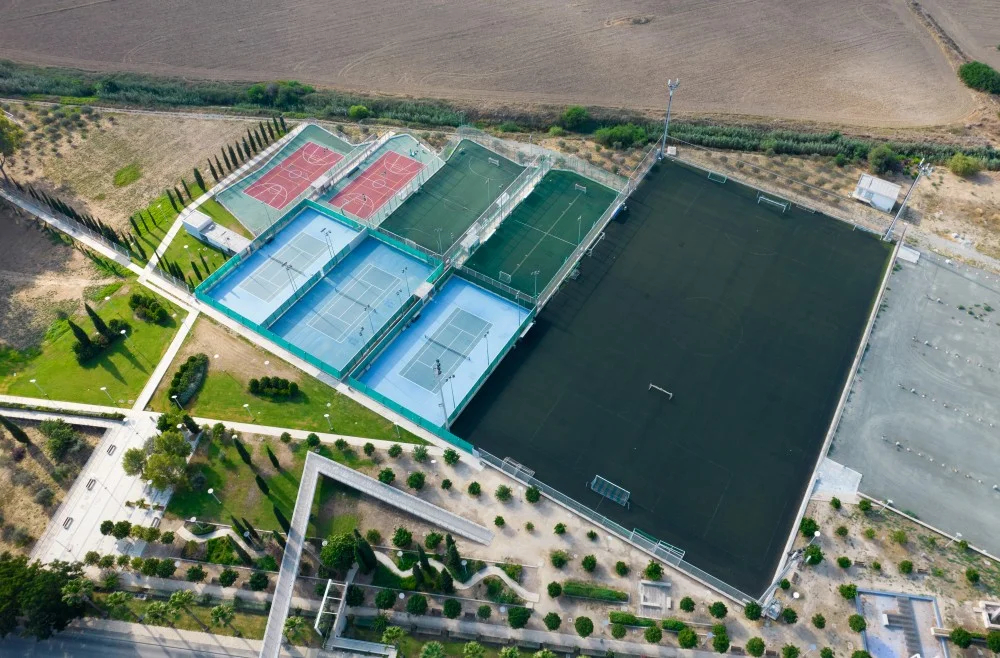Picture this: a school hall buzzing with students playing basketball in the morning, transforming into a yoga class by afternoon, and by evening, it’s hosting a community event. Multi-purpose halls are meant to adapt, but the question is—can the flooring really keep up with this variety? This is where synthetic sports flooring steps in as a game-changer. Unlike traditional options, it isn’t just about looks or durability—it’s about safety, flexibility, and long-term value. In this blog, let’s talk about why synthetic flooring has become the go-to choice for multi-purpose halls, and why it might just be the smartest investment you’ll ever make.
The Rise of Multi-Purpose Halls
Multi-purpose halls are no longer just for one activity. Schools, colleges, gyms, and even community centers now rely on them for everything—sports tournaments, cultural events, fitness classes, and social gatherings. This makes the flooring choice more important than ever. Traditional options like wooden or concrete floors might look good at first, but they often fail to provide the versatility and resilience that these spaces demand. Synthetic sports flooring, on the other hand, is built exactly for this kind of multi-use functionality. It adapts to different activities without wearing out quickly, making it a perfect match.
Durability That Outlasts Traditional Flooring
Think about how much traffic a multi-purpose hall gets—hundreds of footsteps daily, heavy sports equipment being dragged around, chairs and tables set up for events. Traditional wooden floors tend to scratch, chip, and demand constant polishing. Concrete might be strong, but it isn’t exactly athlete-friendly.
Synthetic sports flooring, however, is designed to take the beating. It resists scratches, impact, and moisture, meaning you won’t be spending on repairs every few months. For institutions on a budget, this durability translates directly into cost savings. It’s a one-time investment that pays off for years.
Safety First: Protecting Athletes and Users
One of the biggest concerns in multi-purpose halls is safety. Slippery floors or hard surfaces often cause injuries, whether it’s a sprained ankle during a basketball match or a fall during a dance rehearsal. Synthetic sports flooring comes with shock absorption and anti-slip features, reducing the risk of accidents.
For athletes, it’s not just about performance but also injury prevention. The flooring’s cushioning effect reduces the strain on joints and muscles, making it a safer environment for both professionals and beginners. When a hall prioritizes safety, it automatically attracts more users, whether for sports or other community activities.
Low Maintenance, High Value
Ask any facility manager and they’ll tell you—maintenance eats up budgets like nothing else. Wooden flooring requires regular polishing, varnishing, and careful cleaning to maintain its finish. Concrete floors, while low-cost initially, often crack or develop dusting issues.
Synthetic sports flooring, in contrast, is easy to clean, stain-resistant, and requires minimal upkeep. A simple mop or vacuum does the job. This low-maintenance aspect makes it a favorite for schools and institutions that want to focus more on usage and less on upkeep.
Versatility for Every Occasion
The beauty of multi-purpose halls is in their adaptability, and synthetic sports flooring matches that spirit. Need to host a volleyball game in the morning, a stage play in the afternoon, and a wedding reception at night? No problem. The flooring is built to handle sports-level intensity while still offering a smooth, professional look for events.
This versatility makes synthetic flooring an “all-rounder.” Institutions no longer need to compromise between sports-friendly flooring and event-friendly aesthetics—they get both in one.
Long-Term Cost Efficiency
Yes, synthetic sports flooring might feel like a bigger investment upfront compared to simple cement or tiles. But when you calculate the long-term cost, the numbers tell a different story.
Traditional flooring needs frequent repairs, polishing, or even replacements within a few years. Synthetic flooring, with its durability and low maintenance, lasts much longer. Schools, gyms, and community halls that have made the switch often find that the initial expense saves them from continuous recurring costs. It’s like buying a reliable car—you pay a little more initially but save a lot on repairs down the road.
Eco-Friendly and Sustainable Options
Another reason why synthetic sports flooring is becoming popular is its eco-friendly nature. Many modern options are made with recyclable materials and low-VOC (volatile organic compound) finishes, ensuring healthier indoor air quality. For institutions that care about sustainability, this makes synthetic flooring a more responsible choice. Plus, the fact that it lasts longer means less material waste over time.
Conclusion
Multi-purpose halls are at the heart of modern communities, adapting to everything from high-energy sports matches to elegant social gatherings. But without the right flooring, their potential remains limited. Synthetic sports flooring stands out as the best investment because it combines durability, safety, versatility, and long-term savings—all in one package. Whether you’re managing a school, a sports facility, or a community hall, choosing synthetic flooring means you’re not just planning for today—you’re investing in the future.



